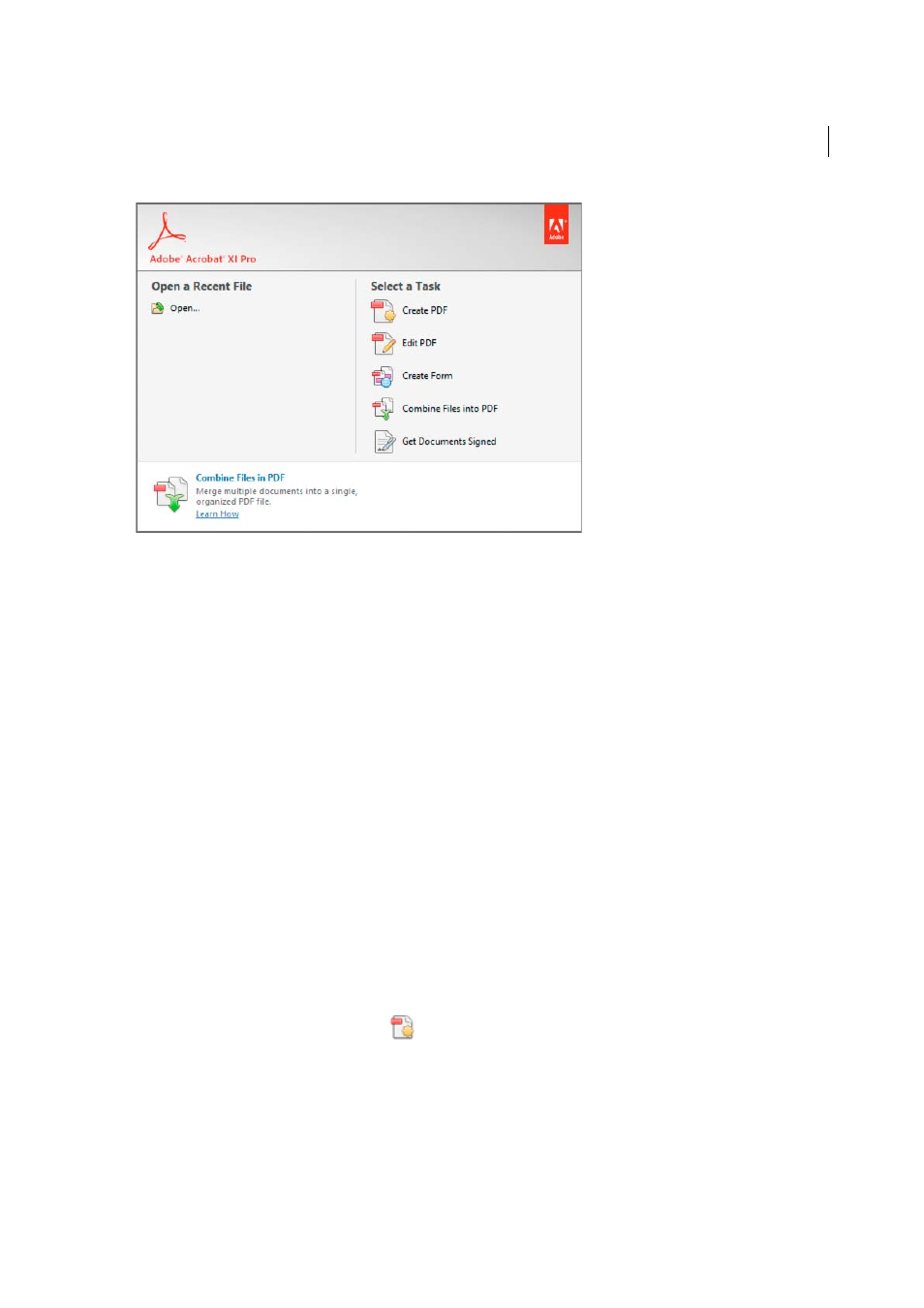Menus and context menus, Toolbars – Adobe Acrobat XI User Manual
Page 108

101
Workspace
Last updated 1/14/2015
Note: In Mac OS, you can turn off the Welcome Screen by setting a preference. Choose Acrobat/Reader > Preferences. In
the Categories on the left, click General. In the Application Startup section, deselect Show Welcome Screen. There is no
similar option in Windows.
Menus and context menus
Ordinarily, it’s a good idea to keep the Acrobat menus visible so that they are available as you work. It is possible to hide
them, using the View > Show/Hide > Menu Bar command. However, the only way to display and use them again is by
pressing F9 (Windows) or Shift+Command+M (Mac OS).
Unlike the menus that appear at the top of your screen, context-sensitive menus display commands related to the active
tool or selection. You can use context menus as a quick way to choose commonly used commands. For example, when
you right-click the toolbar area, that context menu displays the same commands as the View > Show/Hide > Toolbar
Items menu.
1
Position the pointer over the document, object, or panel.
2
Click the right mouse button.
Note: (Mac OS) If you don’t have a two-button mouse, you can display a context menu by pressing the Control key as you
click with the mouse.
Toolbars
The default toolbars—Quick Tools and Common Tools—contain commonly used tools and commands for working
with PDFs. Most available tools are included in the Tools pane at the right side of the window. You can add tools to the
toolbars for easy access.
The toolbars also include the Create button
. Click the arrow to the right of the Create button to display a menu of
commands related to creating PDFs.
